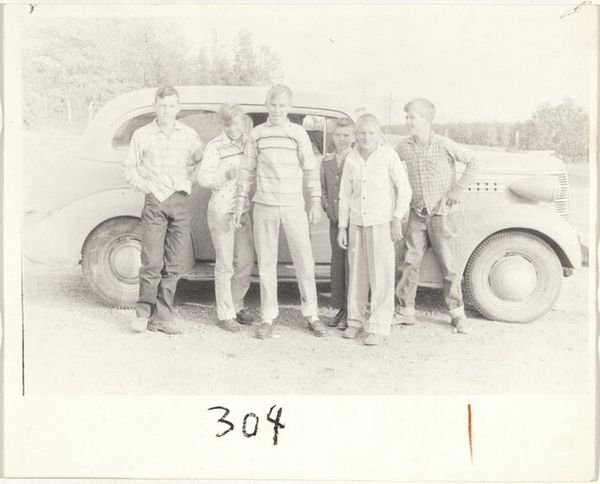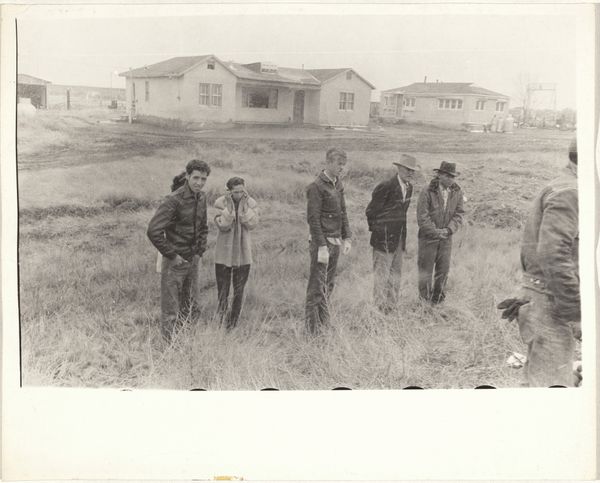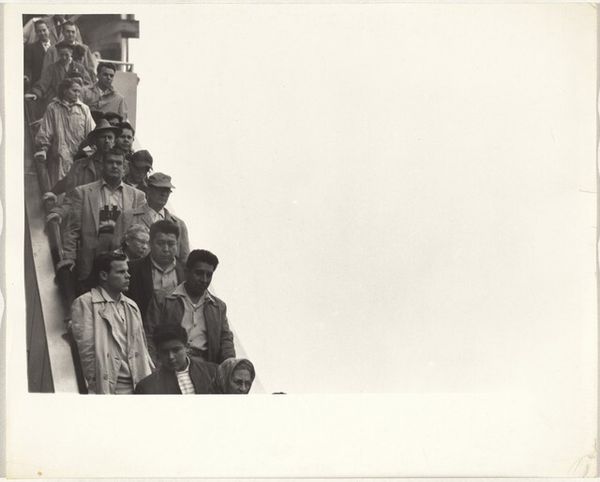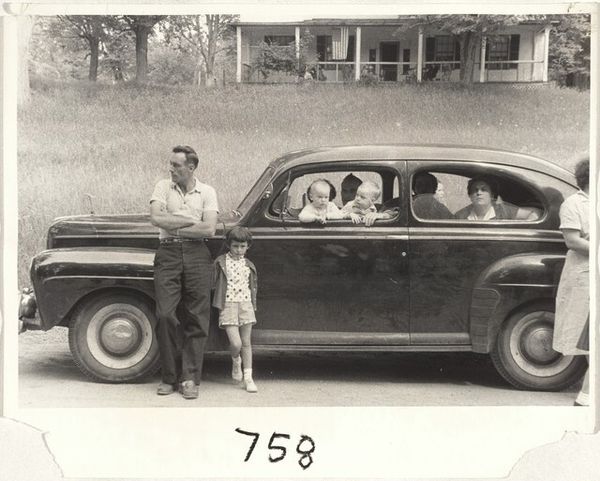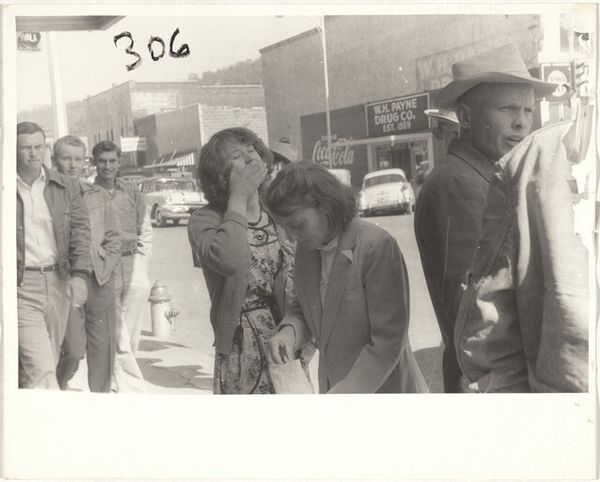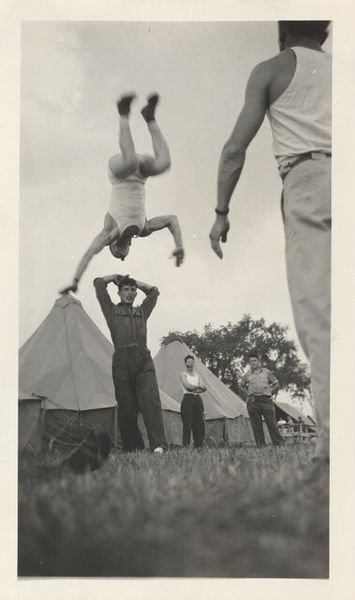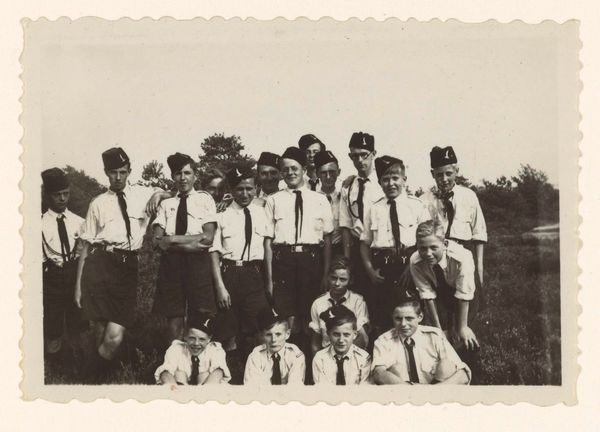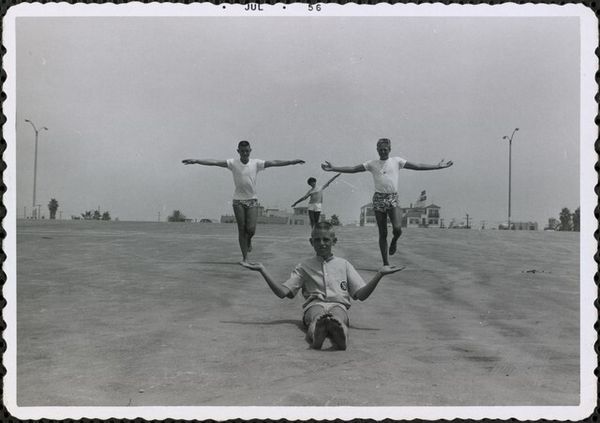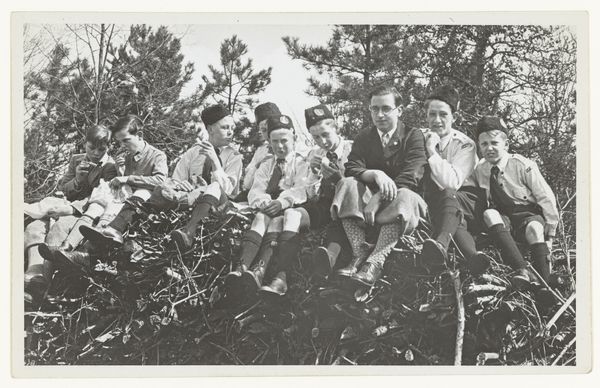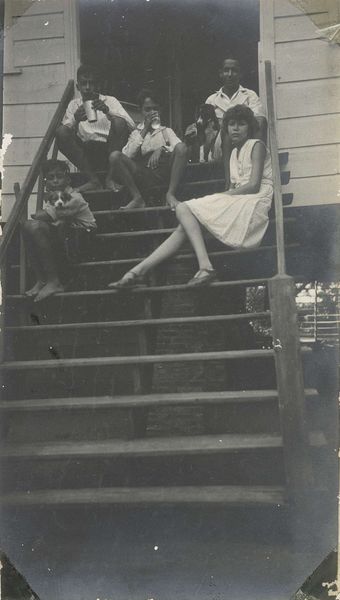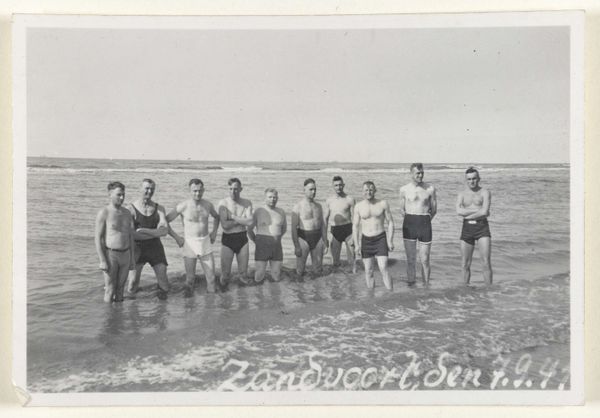
Dimensions: sheet: 20.2 x 25.3 cm (7 15/16 x 9 15/16 in.)
Copyright: National Gallery of Art: CC0 1.0
Curator: Let's turn our attention to this evocative piece by Robert Frank. It’s entitled "Group leaning on automobile--Casper, Wyoming," and Frank captured it in 1956. Editor: Wow, first impression? It's like a visual chord. Slightly off-key, melancholic. The car acts like a gathering place but it cannot hide the loneliness. Everyone's there, yet distant. Curator: Indeed. This photograph comes from Frank’s seminal work, *The Americans*, a collection that critically examined American society during the mid-1950s. He aimed to document life in America without the usual glamorization, portraying everyday scenes and the struggles he observed. Editor: And boy, does he deliver. Look at their postures, their clothes – a mix of casual indifference and posed expectations. The car is central, almost an extension of themselves, but the vacant landscape speaks volumes. What I think he wanted to convey through them is a type of American solitude. Curator: The location itself adds another layer, doesn't it? Wyoming in 1956, a state undergoing significant economic shifts with the rise of the oil industry. This image perhaps inadvertently captures some of the associated social complexities and economic anxieties percolating at that time. The work reflects the cultural landscape. Editor: It's beautifully unvarnished. You can almost smell the dust, the cheap beer. No forced smiles here. They have a sense of detachment in common that's oddly alluring, it feels truthful. What fascinates me is how it manages to be both specific and universal at the same time. It's about those people then, but it speaks to broader feelings of isolation and societal norms now. Curator: I completely agree. By capturing ordinary Americans, Frank challenges idealized representations and explores the social dynamics of the era. "The Americans" has significantly influenced documentary photography and its role in critically assessing the political structures. It encouraged future photographers to focus on personal expression while engaging in societal observations. Editor: It's that gritty authenticity that hooks you. It makes you feel, think, question. That's why it’s so striking. Curator: Absolutely, and it remains a touchstone in understanding the photographic gaze as a means of social commentary. Editor: It certainly shifted the narrative of what photographs can be about.
Comments
No comments
Be the first to comment and join the conversation on the ultimate creative platform.
